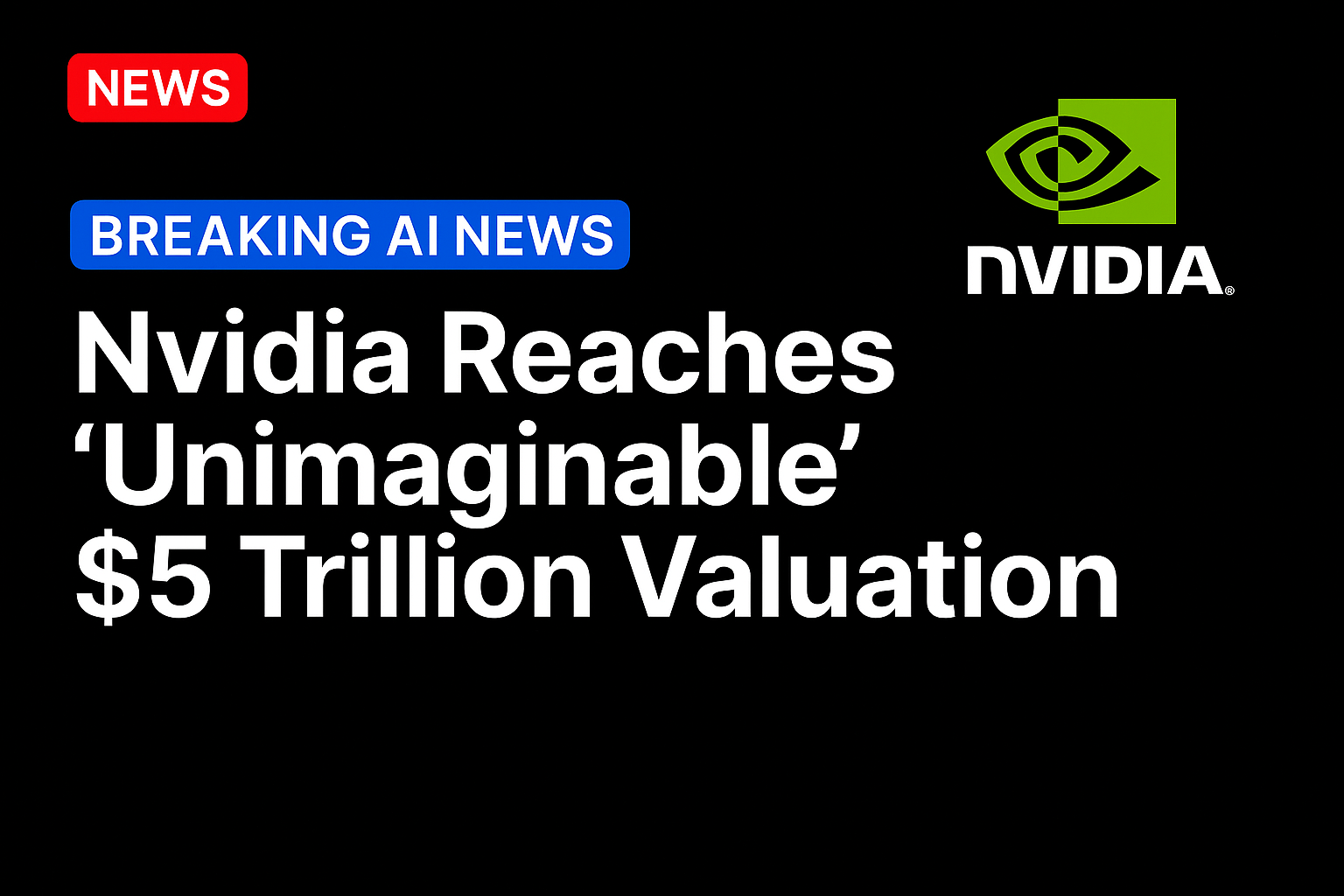
Chipmaker Nvidia is now the world’s first $5 trillion company.
The tech giant had been on pace to reach that milestone before the markets opened Wednesday (Oct. 29), with its valuation hitting $5.1 trillion as of mid-morning.
Nvidia is already the largest company in the world, passing the $4 trillion mark in July. Two other companies, Microsoft and Apple, have valuations in the $4 trillion range.
“A $5 trillion market cap would’ve been unimaginable a few years ago, especially getting here this quickly,” Keith Lerner, chief investment officer and chief market strategist at Truist Advisory Services, told Bloomberg News. “The market is certainly putting a lot of stock into the idea that AI will be transformational and change business models.”
The report points out the momentum behind the company, with President Donald Trump preparing to meet with Chinese President Xi Jinping about Nvidia’s flagship Blackwell artificial intelligence (AI) chip.
Nvidia has also recently unveiled a new system to connect quantum computers, launched an expanded partnership with Uber, and announced a $1 billion investment in Nokia.
In other Nvidia news, PYMNTS wrote earlier this month about research by the company that makes the case that businesses might be better served by AI small language models (SLMs). The company argues these models are powerful enough for many real-world tasks, cost less to use and can be deployed at scale without the same infrastructure needs as large language models (LLMs).
The company does not contend SLMs are flawless. They struggle with tasks that require deep context or broad knowledge, and they are still susceptible to hallucinations or misinterpretations.
“But the economic framing is key,” PYMNTS wrote. “If SLMs can complete 70% to 80% of routine steps cheaply and reliably, and LLMs backstop the rest, the ROI profile for enterprises improves. The hybrid model is not about eliminating error but about routing work to reduce exposure and optimize cost.”
For executives thinking about their AI budgets, Nvidia’s research changes the question from which large model to pick to how much of the workflow can be handled smaller, cheaper models without losing quality, that report added.
“If Nvidia’s thesis holds, enterprises could evolve toward architectures where SLMs handle most routine work and LLMs act as fallbacks. That shift would redefine how organizations design AI systems and how they measure value,” PYMNTS concluded.
Source: https://www.pymnts.com/




